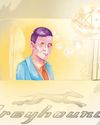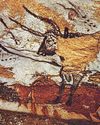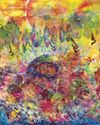
Recently I took part in an ‘Author Meets Critics’ session at the 2024 College Art Association Meetings. The three critics of my book, Thoughtful Images: Illustrating Philosophy Through Art (OUP, 2023), were all artists. Each had insightful things to say about the relationship between my claims about illustration and their own artistic production. I was genuinely touched to hear how my book had affected their understanding of their own work as well as how it shifted their previously dismissive attitude towards ‘mere’ illustration. But afterwards, during the question-answer session, a question arose that has been preoccupying me ever since.
During my talk I had mentioned Andy Warhol’s famous 1964 artwork Brillo Soap Pads Box, aka Brillo Box. The work is a replica of the cardboard cartons containing boxes of Brillo soap pads you can buy from supermarkets. Warhol had numerous boxes fabricated out of plywood, and with the assistance of Gerard Malanga and Billy Linich, he then painted and silkscreened the boxes with the Brillo product logo and associated words and colors. The result looked almost identical to the standard cardboard cartons containing Brillo soap pads. The question I’ve been thinking about is: ‘Is Brillo Box an illustration?’ Despite having discussed the work both in my book and my response to the critics at the CAA session, I had not considered that specific question. I was surprised by it and did not have a good answer to it at the time. But I have continued to think about it, and, as a result, have modified some claims I made about illustration in Thoughtful Images.
Illuminating Illustrations
To explain this, it will be helpful to provide a little background about the claims I made in Thoughtful Images about the nature of illustration.
この記事は Philosophy Now の October/November 2024 版に掲載されています。
7 日間の Magzter GOLD 無料トライアルを開始して、何千もの厳選されたプレミアム ストーリー、9,000 以上の雑誌や新聞にアクセスしてください。
すでに購読者です ? サインイン
この記事は Philosophy Now の October/November 2024 版に掲載されています。
7 日間の Magzter GOLD 無料トライアルを開始して、何千もの厳選されたプレミアム ストーリー、9,000 以上の雑誌や新聞にアクセスしてください。
すでに購読者です? サインイン

Metaphors & Creativity
Ignacio Gonzalez-Martinez has a flash of inspiration about the role metaphors play in creative thought.

Medieval Islam & the Nature of God
Musa Mumtaz meditates on two maverick medieval Muslim metaphysicians.

Robert Stern
talks with AmirAli Maleki about philosophy in general, and Kant and Hegel in particular.

Volney (1757-1820)
John P. Irish travels the path of a revolutionary mind.

IT'S A WONDERFUL LIFE
Becky Lee Meadows considers questions of guilt, innocence, and despair in this classic Christmas movie.

"I refute it thus"
Raymond Tallis kicks immaterialism into touch.

Cave Girl Principles
Larry Chan takes us back to the dawn of thought.

A God of Limited Power
Philip Goff grasps hold of the problem of evil and comes up with a novel solution.

A Critique of Pure Atheism
Andrew Likoudis questions the basis of some popular atheist arguments.

Exploring Atheism
Amrit Pathak gives us a run-down of the foundations of modern atheism.